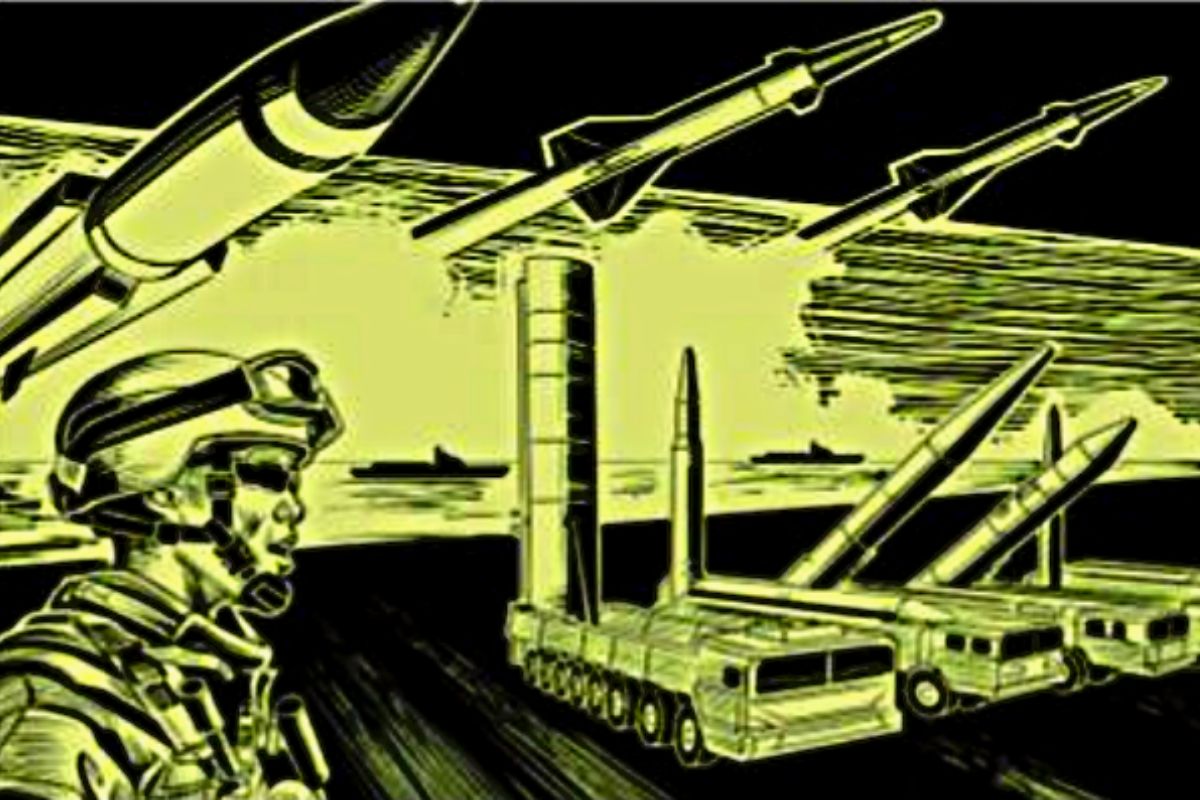If China were vulnerable to guided missiles of the rhetorical variety, it would be licking its wounds. The West’s hostility appears to be approaching a crescendo, with scant regard for the potentially catastrophic consequences. Perhaps that should come as no surprise, given the Western attitude towards the Rus-sian war in Ukraine and, more broadly, the seeming determination to largely ignore the existential threat posed by climate change. The attitude reflects what Giorgia Meloni, potentially the next prime minister of Italy, says in her memoir: “If this is to end in fire, then we should all burn together.” Extrapolated to the wider world, that kind of approach could be summed up as: if human civilisation is anyhow destined to roast sooner or later, why not pre-empt nature’s fury by going down in a nuclear blaze of glory?
As American satirist Tom Lehrer spelt it out decades ago when nuclear weapons were a novelty, “And we will all go together when we go./ What a comforting fact that is to know./ Universal bereavement,/ An inspiring achievement,/ Yes, we will all go together when we go.” Lehrer, a Harvard mathematician, abandoned his musical pursuits after Henry Kissinger received the Nobel Peace Prize in 1973, claiming reality had trumped satire. Now a nonagenarian, he would probably acknowledge that those were relatively innocent times compared with the present, when electing degenerate clowns to the highest office is increasingly the norm. And, all too often, the supposedly ‘normal’ substitutes readily stumble into the traps set by their predecessors. The Biden administration, for instance, has doubled down on the antipathy towards Beijing encrusted in the Trump White House.
Advertisement
Just last weekend, for example, Gen Mark Milley, chairman of the US joint chiefs of staff, claimed that “the Chinese military, in the air and at sea, have become significantly more … aggressive in this particular region”. On a trip to the Indo-Pacific, Milley was referring to ocean lanes proximate to China. Try to imagine potentially hostile warships conducting ‘freedom of navigation’ exercises in the Straits of Florida, or overflights by Chinese warplanes within striking distance of the coast of California. Would the Pentagon simply sit back and enjoy the spectacle? The American attitude is not surprising. Through much of history, empires have focused on resisting encroachments by rival contenders for hegemony. After the Soviet Union crumbled, the US envisaged a unipolar world.
A ‘peace dividend’, though, didn’t fit into the business plan of the dominant military-industrial complex. Other enemies were required. And found right on cue. The disastrous interventions in Afghanistan and Iraq have now given way to the familiar foes of the Cold War era. Russia, stupidly, has come to the party dressed in combat gear. Vladimir Putin’s disastrous decision to invade Ukraine has breathed new life into Nato — the chief instrument of US hegemony in Europe — and reinvigorated the Western arms industry. Pouring arms, technology and advice into Ukraine fortifies a fight against Russia that can be conducted indefinitely, without risking Western lives — barring the odd mercenary. There appears to be no simultaneous diplomatic track to end the war, which ought to have pre-emptively kicked in once US intelligence agencies were convinced of Putin’s aims.
Notwithstanding the risk — still remote, but hard to ignore — of a potential nuclear conflagration in Europe, the main Western adversarial focus appears to be on China. It isn’t hard to find flaws with the Chinese model in economic, political and geopolitical terms. State capitalism (officially described as ‘socialism with Chinese characteristics’) has proved impressive in alleviating poverty, but depressing in terms of entrenching vast disparities in wealth. Its Belt and Road Initiative is yet to prove its worth as a particularly desirable alternative to Westernstyle neocolonialism. And domestic repression from Xinjiang to Hong Kong casts a shadow over Xi Jinping’s apparent determination to entrench himself as a worthy replica of Chairman Mao.
The US economy, however, is in worse shape at many levels, and the political pictu-re is even more disturbing. Xi’s wish of a third term at the helm might be fulfilled in Nov-em-ber, while the midterm US polls that month could fatally doom the Biden presidency. Would a serious run-in with China help rescue the Democrats? House of Representatives speaker Nancy Pelosi seems determined to test the waters with a trip to Taipei that Beijing has red-flagged as a potentially intolerable provocation. The Chinese attitude towards Taiwan may be unfair — perhaps even as absurd as the debate over China policies between the contenders for British prime ministership. Yet testing the limits of the Xi regime’s patience would be extremely foolhardy. Diplomacy over Ukraine has effectively gone AWOL. It makes no sense to risk a potentially even bigger cataclysm.











